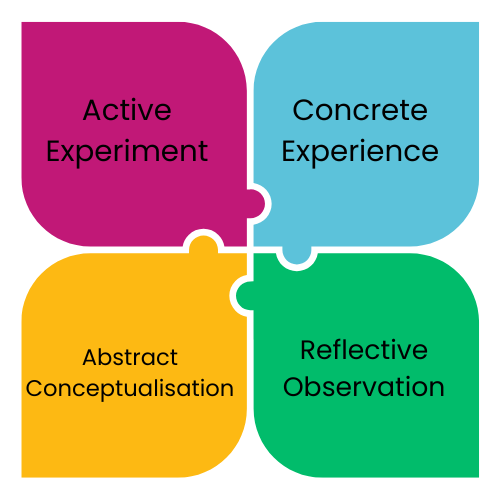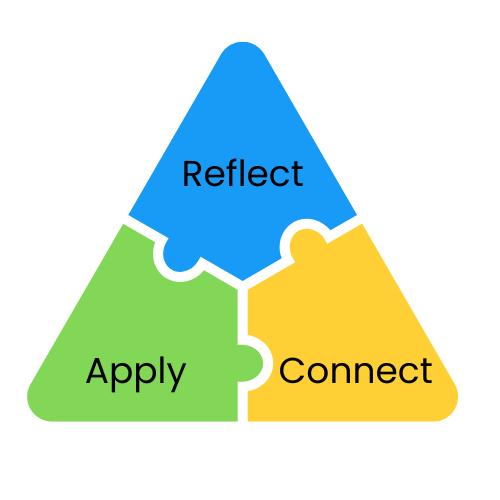What is Experiential Learning?
Put simply, Experiential Learning is learning by experiencing the task. What can it look like, and can it affect the way we offer learning experiences?
Explore with us.
In 1984 David Kolb built on the work of other learning model academics where their ideas were more rigid and based on research rather than practical application. In his work, he created four stages a learner cycles through to internally translate an experience into a different behaviour. He suggested that you don’t need to go through every stage to be successful.
Kolb’s Experiential Learning Cycle
4 Stages: Concrete Experience, Reflective Observation, Abstract Conceptualisation and Active Experiment
Concrete Experience (feeling)
The person experiences the learning directly and how they feel about it.
Reflective Observation (observing/watching)
The person considers what they have learnt in this new experience.
Abstract Conceptualisation (thinking)
The person’s reflection gives rise to adapting their thinking.
Active Experiment (doing)
The learner applies this new thinking in the real world to see what happens.
He also suggested that there were two continuums that demonstrate the different styles in which we prefer to learn; the Processing Continuum looks at how a person approaches the task (from watching to doing) and the Perception Continuum that considers how a person feels about the task (from feelings to thinking).
Putting Experiential Learning into practise….or practice.
The theory of experiential learning enables learners of all types, and at all stages (knowledge, skills and experience) to engage in the learning process and to attain what they need.
From Kline’s model
3 Elements: Reflect, Connect, Apply
Further discussed here by Nancy Kline, focussing on time to think brings together Reflect, Connect and Apply - an ethos Beyond the Skills, embraces.
The reflective practice model is now embedded in most coaching and leadership thinking- leading with the ‘do’, or a challenge is commonplace.
Looking at an example of a sports performance coach, we’ll notice their role is to ‘break it down’ for the player, show them the elements that need improvement and to take them through the planned steps to build it up to a new way of performing such as changing their movement to connect with the ball, run better, jump higher, etc.
All too often, we rush from reflect to apply and, as a result, changes in behaviour can be short-lived. Whilst the learner may notice a difference in performance immediately, the behaviour or action isn't sustained. Where the changes are subtle, the learner may not be able to apply beyond the dedicated session. So how do you embed it?
When aiming for an idea to connect, the learner has to make sense of it first. This process has little to do with the skill itself.
By going beyond the skills we have the opportunity to join the dots - taking the new idea and one's own views and bouncing back and forth between them whilst reflecting, or reviewing what we have learnt with what conclusions we make about them both…. until they merge into one. The learner is now more likely to retain this new idea as they have taken ownership of it within their value system - in sport, in business or in life. There’s some useful further reading here about Reflective Practice for teachers.
This is core to what we do at Beyond the Skills (and now you’ll understand why we are so apply named). Our challenges are designed to transcend beyond the skills to apply meaningful learning into the learner’s belief system. We learn best when it’s fun, we’re engaged and it has a purpose - and we want the world to have access to them.
We’re on a mission to bring play back to our learning experiences and we have a number of experiential learning challenges and products available to help with developing what we call the Skills of the Future. Let’s look at our products



